Blog Post
Helpful Neighbors Donating Food
wastholm.tumblr.com/post/3936688516/helpful-neighbors-donating-food, posted 2011 by peter in fukushima japan jpquake

Mamasan went to the coin laundry yesterday and got in a conversation with one of the other patrons, who was a local. Upon learning that mamasan and her family were evacuees, this person went home and soon returned with some home cooking: nice hot miso soup. This was their second hot meal since last Friday.
NHK is reporting right now that there are 285,000 people in over 2,200 shelters throughout the affected areas. Many shelters are short on food, medicine, and other essentials, so mamasan & co. can still be said to be relatively lucky.
Bookmark
Atomic Insights Blog: Focus on food, water, shelter. Dr. Greg Jaczko is wrong and giving dangerously bad advice
atomicinsights.blogspot.com/2011/03/focus-on-food-water-shelter-dr-greg.html, posted 2011 by peter in fukushima japan jpquake opinion science
One of the nice things about being an old ring knocker (I graduated from the Naval Academy almost 30 years ago) is that you can have a pretty useful set of highly placed friends. Some of them gave me enough information to confirm what I suspected. I cannot think of any way to say this gently - Dr. Jaczko was *wrong*. It is possible someone in his staff provided bad information, but it should not be all that difficult to see the problem with some simple, back of the envelop calculations.
I would think a guy with a PhD could do the math in his head - or at least enough of the math to ask for a verification of the analysis. I would expect someone who is in charge of a large, technically competent organization would double and triple check numbers and statements before going in front of C-Span cameras and a congressional committee and making statements and recommendations that distract the entire world from a real and growing food, water and shelter crisis.
Bookmark
ScienceInsider: ScienceInsider | Japan Earthquake and Tsunammi
news.sciencemag.org/scienceinsider/japan_quake/?ref=topst, posted 2011 by peter in fukushima japan jpquake news science
Follow our continuing coverage of the crisis in Japan, including reports from the ground, global reaction, and the science behind the disaster.
Bookmark
Rebuilding northeast Japan to take years, billions
newsonjapan.com/html/newsdesk/article/88049.php, posted 2011 by peter in business finance fukushima japan jpquake
It took only minutes for the earthquake and tsunami to devastate Japan's northeast. Rebuilding will take years - if it can be afforded. The relentless wall of water that the quake unleashed killed thousands, swept away whole towns, inundated roads and knocked ports, oil refineries, steel plants and factories out of action.
Experts say the cost of the destruction likely exceeds that of the catastrophic 1995 Kobe earthquake - estimated by Standard & Poor's to have totaled $159 billion. The four most severely affected prefectures - Iwate, Miyagi, Fukushima and Ibaraki - are home to industries from farming to auto parts to electronics and make up some 6 percent of Japan's economy.
Hundreds of thousands of people have spent five nights with little food, water or heating in near-freezing temperatures as they dealt with the loss of homes and loved ones.
Blog Post
Life at the Evacuation Shelter
wastholm.tumblr.com/post/3896733858/life-at-the-evacuation-shelter, posted 2011 by peter in fukushima japan jpquake
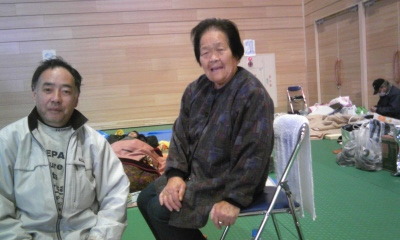
Kenji-san (mama-san’s husband) and his mother, whom everyone calls obâchan (“Grandma”).

Mama-san and obâchan.
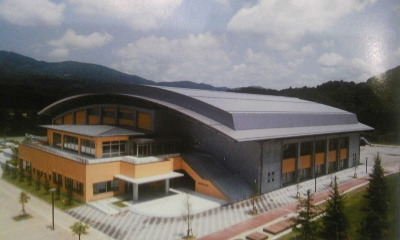
As I understand it, this is what the Fukushima Tamura Stadium looks like from the outside.
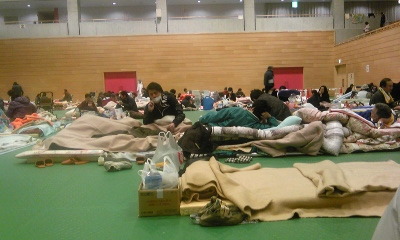
Their sleeping quarters. They have recently been allocated a slightly larger space. People sometimes move from one shelter to another to be with their friends or relatives. They now have one tatami per person (a tatami is a traditional Japanese straw mat, as well as a unit of measurement equivalent to about two square meters).
Blog Post
Life at the Evacuation Shelter
wastholm.tumblr.com/post/3896733858/life-at-the-evacuation-shelter, posted 2011 by peter in fukushima japan jpquake

Kenji-san (mama-san’s husband) and his mother, whom everyone calls obâchan (“Grandma”).

Mama-san and obâchan.

As I understand it, this is what the Fukushima Tamura Stadium looks like from the outside.

Their sleeping quarters. They have recently been allocated a slightly larger space. People sometimes move from one shelter to another to be with their friends or relatives. They now have one tatami per person (a tatami is a traditional Japanese straw mat, as well as a unit of measurement equivalent to about two square meters).
Blog Post
Map Showing Location of Our Relatives in Fukushima
wastholm.tumblr.com/post/3877883966/map-showing-location-of-our-relatives-in-fukushima, posted 2011 by peter in fukushima japan jpquake
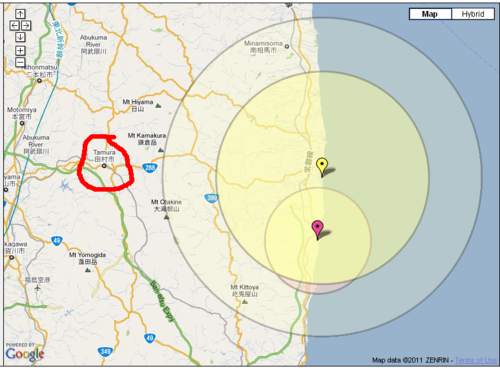
My wife’s mom, her husband, and his mother are in Tamura, about 40 km from the disaster-struck Fukushima Daiichi power plant, the yellow pin on the map. The yellow circle shows the 20-km evacuation zone; the larger circle indicates the 30-km zone in which people are advised to stay indoors and keep windows closed. Their house is about half way between the Daiichi and Daini power plants. (The latter, indicated by the pink pin, also had problems earlier but the situation there now seems to be under control.) The house is near the town of Tomioka, whose train station, which has often served as our starting point for trips around Japan, has been completely washed away by the tsunami.
Blog Post
Map Showing Location of Our Relatives in Fukushima
wastholm.tumblr.com/post/3877883966/map-showing-location-of-our-relatives-in-fukushima, posted 2011 by peter in fukushima japan jpquake

My wife’s mom, her husband, and his mother are in Tamura, about 40 km from the disaster-struck Fukushima Daiichi power plant, the yellow pin on the map. The yellow circle shows the 20-km evacuation zone; the larger circle indicates the 30-km zone in which people are advised to stay indoors and keep windows closed. Their house is about half way between the Daiichi and Daini power plants. (The latter, indicated by the pink pin, also had problems earlier but the situation there now seems to be under control.) The house is near the town of Tomioka, whose train station, which has often served as our starting point for trips around Japan, has been completely washed away by the tsunami.
|< First < Previous 91–100 (104) Next > Last >|
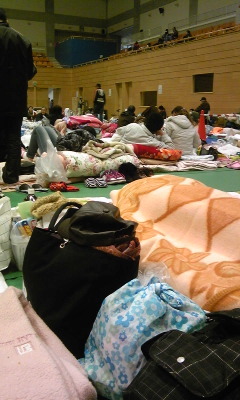
![[photo]](/images/peter_autumn)